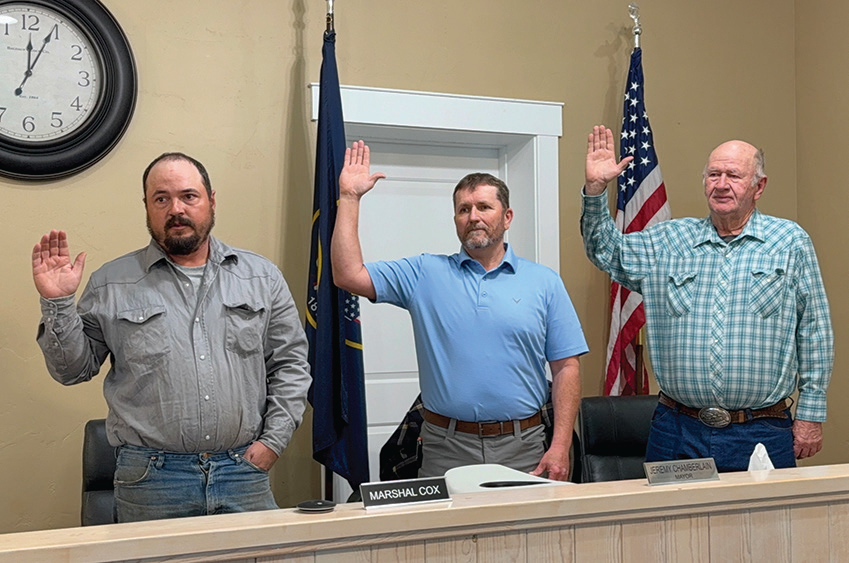Kanab City shares insights on Impact Fees, and summary of regular six-year plan and analysis
- Ty Gant

- Apr 10, 2024
- 4 min read
Kanab staff and city council have been undergoing a regular review of the city’s impact fees and making plans for future impact fee use. According to Kanab City Manager Kyler Ludwig, this is according to Utah State Statute which calls for such a review and planning session every six years - resulting in the series of city council meetings this year that have devoted agenda time to impact fees. In light of this, Ludwig shared some information with the Southern Utah News about impact fees, their allowed uses and some of the projects Kanab City has planned to partly fund with incoming impact fees.
Impact fees are, in short, a fee designed to mitigate the impact of new growth and development within a municipality - for example, when Kanab gains new residents, those residents will require water, sewer and power to their home, and will contribute to the use and wear on city roads, parks and trails. Impact fees help the city adjust to that growth and maintain the established level of service. Per Ludwig, “We can’t repair a deficit as a use for impact fees … we can’t use them to go back and solve an existing problem, what we can use them for is narrowly focused. Our impact fees helped with working on the new water tank and the expansion of the Ranchos park - these improvements don’t affect existing property taxes. If we’re going to be getting a new well, that will not be paid for by existing users, it’ll be paid for by new entities coming in that require us to expand the system.”
Kanab City staff have been preparing for this year’s regularly scheduled impact fee for a few months, meeting with engineers and accepting public input since last summer. The current process the Kanab City Council is undergoing brings that feedback together to make proposals and compile a list of projects eligible for impact fees. Ludwig summed up a project’s eligibility for impact fees as, “Is this needed for growth, or is something the city wants to do currently?”
Ludwig went on to share some of the plans on the current impact fee schedule, including improvements to city parks - and very long term, entirely new city parks around new residences - improvements, expansions and connections for local trails, preparations for sewer in the Ranchos and improvements to the sewer ponds to improve aeration, improve cleanliness and mitigate the scent. Per Ludwig, “Recreation is a little different from other impact fee uses, it’s a little more long term and subject to change … but we can be a little more specific with other uses like the road expansions. We’re looking to connect Rocky Road east to 89 in Mesa Hills, we’re looking to improve our snowplow and salt storage and widen 1100 south eventually, because traffic data shows it’ll be insufficient for needs as we grow.”
Ludwig also explained how impact fees incentivize developers of new housing to collaborate with the city during the planning phase - using the examples of La Estancia and Catori Canyon receiving impact fee credits for expanding and connecting Kanab’s trail system within their subdivisions.
“There is a limit to what they can do to earn impact fee credits,” Ludwig explained, “since, for the trail example, recreation is only a small percentage of all the impact fees they pay, but they can be credited for the recreation portion by expanding those trails and making them accessible to the Kanab public. It’s a good way to ask the developer that sort of question, ‘how does this benefit the public good?’”
Impact fees also aid police, fire and EMS under the umbrella of Public Safety. The Kanab City Police Department’s recent move of its headquarters was paid for in part by impact fees, just as the planned police building will be. Impact fees are also planned for the city to expand storage facilities for fire and EMS trucks and supplies. Ludwig offered the police station as an example for how the fees are applied: “The police station costs were 34 percent eligible for impact fee payment … but the city staff does a good job of making sure those dollars stretch a little further, like using the impact fees as matching funds to qualify us for state and federal grants, or impact fees can be used to cover costs not covered by grants.” Another example offered was the phases of the sewer project in the Ranchos, with Ludwig stating, “Of the $25 million for the sewer project in the Ranchos, phase one is about eight million. Of that eight million, 1.6 is paid for by impact fees from new residents of the Ranchos.”
When asked how this year’s impact fee analysis is proceeding, Ludwig responded, “It’s pretty standard - that’s why we do this every six years. There [are] minor adjustments to make, but we do this on a regular basis to ensure there’s no shocks for us. We just try to have a good plan for the future.”
Impact fee use is publicly available information, and interested citizens can request them via GRAMA. Additionally, as the city council has been addressing the impact fee plans regularly in their most recent meetings, the specifics of those fees can be found in the city council packets available on the public notice website.




